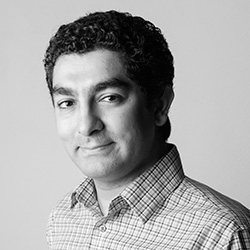Integrated Medical Systems Laboratory
This lab conducts research in various fields of Biomedical Engineering.
LAB DIRECTOR

Dr. Aydin Farajidavar
- Profile
- Website
- afarajid@nyit.edu
- Long Island Campus: Harry Schure Hall, Room 106
ACTIVE PROJECTS
Reliable Power-Efficient Miniature Bidirectional Telemetric Platforms for Acquiring Biological Signals
The need for implantable/wearable devices for the wireless acquisition of biological signals is emerging in various medical fields. Electrophysiological applications include in-vivo recording of gastric electrical activity (GEA) to study dysmotility, single-unit action potentials (APs) and electrocorticograms (ECoG) to study neuronal activities, and transcranial motor-evoked potentials (TcMEP) for intraoperative neurophysiological monitoring of spinal cord integrity. These require physically miniaturized devices with low power consumption and the capability of implantation. These systems should provide reliable communication in real time with sufficient data rates.
Closed-Loop System for Real-Time Recognition and Inhibition of Nociceptive Signals
Clinical studies have shown that spinal or cerebral neurostimulation can significantly relieve pain. Current neurostimulators work in an open loop, and thus their efficacy depends on the patient's or physician's comprehension of pain. We are developing a real-time automatic recognition algorithm to detect action potentials and cluster various neuronal activity levels.
Signal Processing for Analyzing APs and ECoG to Detect Nociception
The recent development of neural interfaces has enabled the extraction of a huge amount of information from the nervous system. However, understanding the message of the nervous system requires adequate signal processing. We are conducting signal acquisition (APs and ECoG) and analysis (real-time and off-line) from the nervous system (spinal cord and brain) to better understand and distinguish between various states of mind and pain circumstances.
Modeling Biological Systems: The Process of Long- and Short-Term Potentiation in Chronic Pain-Related Phenomenon
The objective of this work is to understand the mechanisms underlying wind-up generation, a condition related to chronic pain, that might allow clarification of the molecular mechanisms of pain signaling and development of strategies, such as transcutaneous electrical nerve stimulation (TENS) and deep brain stimulation (DBS) for pain treatment. "Wind-up," is a form of plasticity in the spinal dorsal horn that can be observed during electrical stimulation of pain receptors at low frequencies (0.3–3 Hz). We are designing computational models to explain several aspects of wind-up.